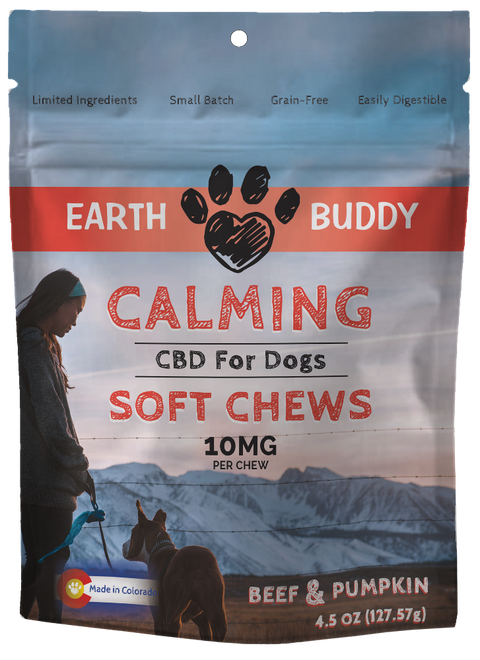Complete Guide to Cannabinoids for Dogs & Cats
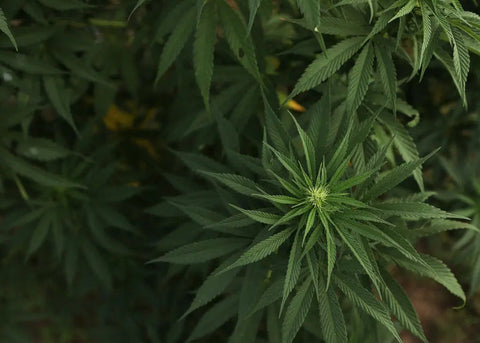
What are Cannabinoids?
Cannabinoids, like Cannabidiol (CBD) for pets, have exploded in popularity over the last decade due to the well-researched medical benefits that pet owners have witnessed. An important term to note when considering cannabis for dogs & cats is the term, “cannabinoid” or phytocannabinoids, which are the fatty acid molecules derived from botanical sources that interact with the Endocannabinoid System (ECS) and other peripheral functions in the body. The cannabis plant produces over 100 of these compounds and can provide a wide array of medicinal value to both humans and pets. Cannabinoids naturally occur in most plants, but no other plant produces more than the genus cannabis sativa-L.
How Cannabinoids Interact with the Endocannabinoid System
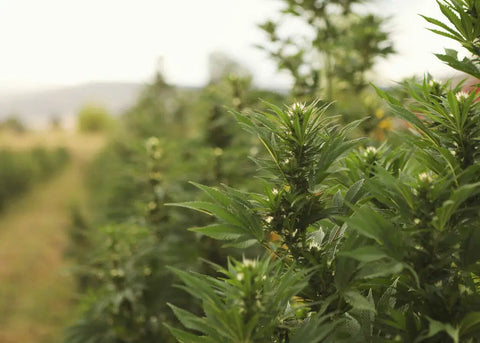
The most well-known cannabinoid is tetrahydrocannabinol (THC), which is the compound responsible for the psychoactive effects of cannabis. However, there are many other cannabinoids that have been identified, including cannabidiol (CBD), cannabigerol (CBG), and cannabinol (CBN).
The Entourage Effect in Pets
Cannabinoids for dogs and cats are not as effective in isolation and often work better with the presence of many cannabinoids, terpenes (essence of cannabis), and flavonoids. The synergistic ability is dependent on maintaining the complexity of compounds that was originally produced by the plant in the flowering phase. When cannabis is flowering or producing large buds, this is the peak period of when cannabinoids and other plant molecules are most abundant.
Extraction Methods & Quality Considerations
Once cannabis plants are harvested and dried, they are taken through a process called “extraction”, which can be done in a number of ways. Safest extraction methods involve Co2, lipid extraction, or temperature & pressure extraction. These methods not only preserve cannabis’ rich density of cannabinoids, terpenes, and flavonoids, but also are more sustainable and environmentally friendly.
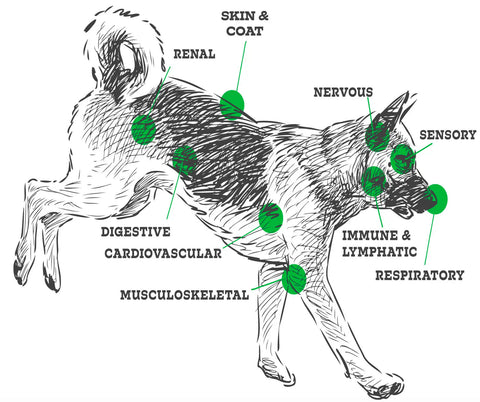
How do Cannabinoids work in Dogs and Cats?
Cannabinoids interact with the endocannabinoid system (ECS) in our bodies. The ECS is a complex network of receptors and neurotransmitters that help regulate various physiological processes, including appetite, immune function, and mood. The Endocannabinoid System in dogs and cats virtually interacts with every major chemical process in the body.Lets dive into the various cannabinoid receptors for dogs & cats:
Key Cannabinoid Receptors in Pets
Found primarily in the central nervous system and brain, a 2019 study of CB1 receptors in dogs showed high amounts in younger dogs & cats, while aging pets show lower expression of this cannabinoid receptor. Although this cannabinoid receptor in dogs and cats is primarily found in the aforementioned, it can also be found in the skin, hair, salivary glands, and peripheral nervous system.
CB2 receptors in dogs and cats can be found in abundance throughout the body and most cellular functions. These receptors often have a high concentration of expression in the gastrointestinal tract along with sites of inflammatory response to skin irritation. Other sites include muscles, immune cells, respiratory, and sensory sites.
Now let’s look at two of the most well researched Endogenous Cannabinoids in Pets, which are endogenous molecules that bind or engage cannabinoid receptors:
Derived from the Sanskrit word “Ananda” meaning bliss, Anandamide (arachidonylethanolamide) is an unsaturated fatty acid naturally produced by the body. Interacting with several functions of the nervous system, Anandamide engages neurotransmitters associated with brain activity and mood.
2-AG is a lipid compound associated with activating cannabinoid receptors in mammals, but also has shown various modulatory effects on peripheral receptors and sites. Research has shown that this endogenous cannabinoid may be responsible for exchanging vital information among various cellular functions.
When cannabinoids are introduced into the body, they activate or bind to these receptors and stimulate the ECS to produce various effects. For example, CBD has been shown to help promote a sense of calm in pets, which can be beneficial for pets with stress-related issues. This is due to CBD’s ability to signal serotonin pathways, which is dog and cat’s primary mood chemical.
In addition to its calming properties, CBD, CBG, and CBDa have also been shown to have discomfort-relieving effects, which can be helpful for pets suffering from stiff or chronic hip & joint issues. The various cannabinoids for dogs and cats that cannabis produces relieve discomfort by signaling inflammatory pathways, like that of NSAIDs.

Fortunately for us and our pets many plants, but most abundantly, the cannabis sativa L plant produces over 100 of these similar compounds called phytocannabinoids that can help in the same way to engage our ECS and create balance within the body. By binding to the same receptors that naturally produced endocannabinoids, cannabis cannabinoids or “phytocannabinoids” can be a medicinal pharmacopeia to help with many different functions in our pet’s body.
Used for thousands of years, spanning across almost every culture, the use of cannabis for pets and people is regularly documented as a botanical remedy. Botanical extracts from cannabis are a safe and well-tolerated supplement for many of the common pet health issues. Dogs & cats in clinical studies have shown to benefit from escalating dosage of cannabinoids in various forms, proving the safety and efficacy of cannabis for pets. Cannabis’ botanical therapeutic potential likely stems from the vast array of chemical compounds whole plant extracts contain. Full spectrum cannabis extracts are often an individualized process when it comes to dosage, so our recommendation is always to start low and gradually increase or decrease as needed.
Is it Safe to Give Cannabinoids to Dogs and Cats?
While CBD and other non-intoxicating cannabinoids have been found to be safe and well-tolerated by pets, it’s important to note that not all CBD pet White German Shepherd laying amongst organic cannabis plants with a bag of CBD treats for dogs. products are created equal. When choosing a CBD product for your pet, it’s important to do your research and choose a reputable brand that uses high-quality,lab-tested ingredients. (wink, wink)
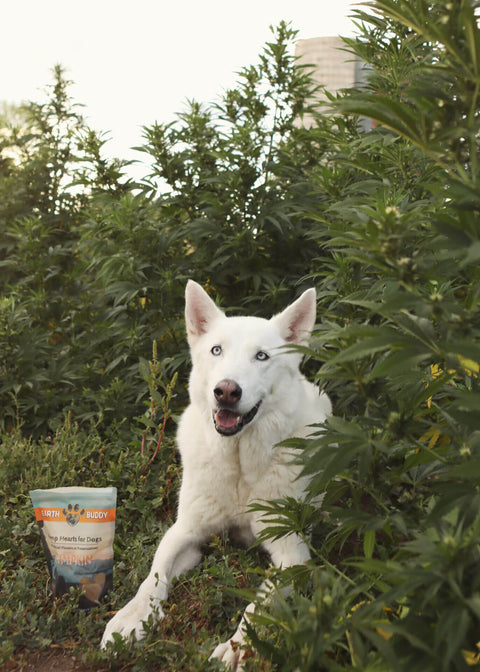
In addition, it’s important to speak with your holistic veterinarian before giving your pet any new supplement or medication, including cannabinoids. Your vet can help you learn about cannabinoids and determine the appropriate cannabis dosage for your pet and can also help monitor your pet’s response to the supplement.
*Note that Earth Buddy does not recommend cannabinoids for younger dogs or cats (puppies or kittens). Our young pets have a developing cannabinoid system that needs to naturally develop and there is little research showing benefit to supplementing young animals with cannabis. Pet parents of new puppies or kittens trying to help with behavioral issues would be better served working with a licensed trainer.
The links below will provide the many benefits of each cannabinoid and how they work along with a variety of scientific references. We hope this information helps!

Get the Free CBD Dosage Journal for Dogs & Cats
Enter email address below and receive a free downloadable Journal to optimize your CBD dosing for Dogs & Cats!


